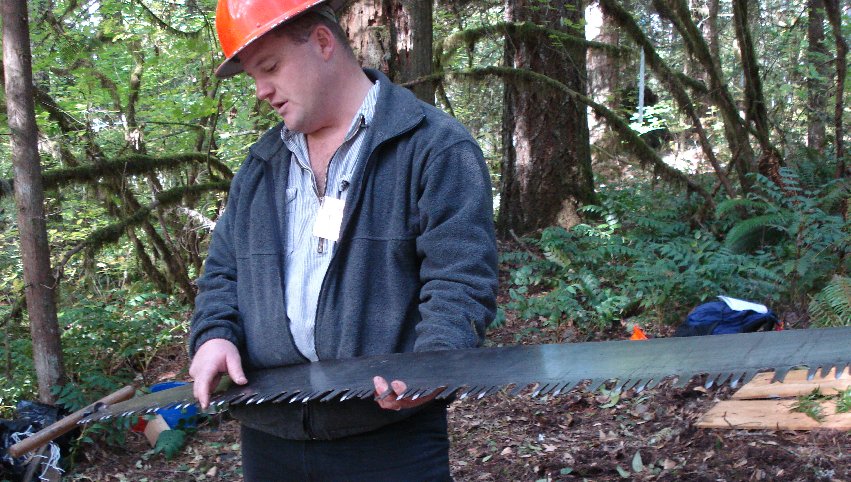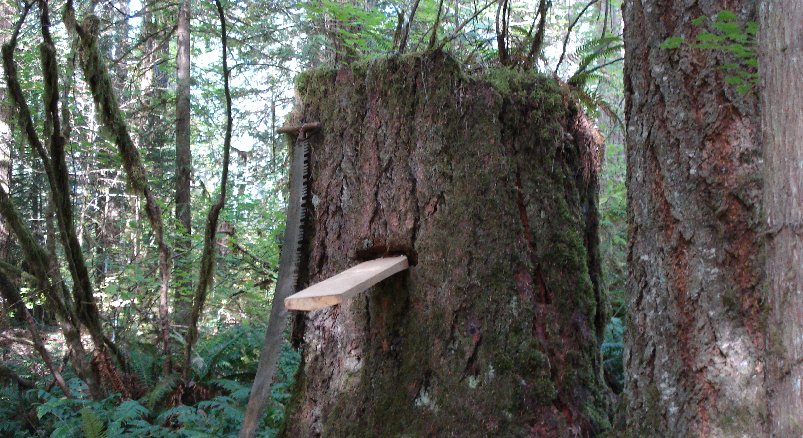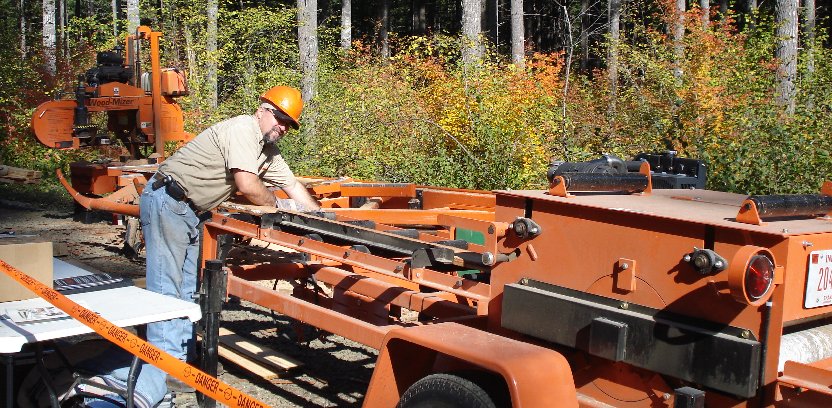Below is a log rolling demonstration at our forestry field day.

You can guess the average age of a group if you know their first names. I looked at the name tags and saw Thelma, two Florences, Roxie, Glenda and Bernice among the first few women that walked past. Men were named Walt, Arnold, Howard and Lester among a couple Johns and Williams. How old do you think they were? At the tender age of 53, I was one of the younger land owners at the tree farmer convention. It makes sense that most forest owners are old. You either have to save up money for a while to buy a forest or inherit one. Tree farmer tend to live healthy lifestyles so they live a long time. We walked many miles up and down hills on our field day and the old folks kept going the whole time. One of the speakers mentioned that 25% of all forest owners are more than 75 years old AND this geriatric assemblage owns more than 50% of the total forested land. I have nothing against that. I hope to be in that group someday, but it does present some challenges.
Below – they used to cut the big trees with these two-man saws. It could take days to finish the job.

The most urgent is one I mentioned in other posts. As the old folks at home take the road to glory, they leave their forest land to their kids who may not appreciate forestry as much. They may convert their immobile inheritance to flowing cash and this will probably lead to the conversion of forest to other uses.
Some people feel bad when they see a timber harvest, but if the land remains in forestry it will soon be covered again with trees. It may stay that way for 40-60 years or more and the clearcut will provide a great environment for wildlife until the trees come in. If it is converted to other uses, however, the forest and rich habitat may be lost for years or forever. A Wal-Mart parking lot, apartment block or highway may persist for a long time. It makes sense for people interested in green space to make it worthwhile for landowners to keep their land in forests instead of going the development route. But development is very seductive.
Below – they stood on these springboards to make the cut. Sometimes they had to go up six or eight feet to avoid the thicker part of the logs. Notice the size of the saw as comparison.

At the convention we were shown figures on the relative value of land kept in forestry versus converted to development. There is almost no place in the U.S. where the value of forestry consistently exceeds the opportunity cost of development. In some places, such as the Idaho panhandle near Coeur d’Alene, the opportunity cost for development exceeds the land’s forestry value by a factor of six to one. Forests and farms provide ecological services that are immensely valuable but usually not valued in money terms. The stream that crosses my forest land exits cleaner than it was when it entered. What is the value of this clean water? Our fields and trees support wildlife, mitigate climate change, and provide beauty for everybody who sees them. Landowners are paid for the wood, crops, livestock of minerals their lands produce, but the value of the unpaid services may exceed these values. Of course, development is not as easy as maintaining the forest status quo, but the incentive es clearly go in the wrong direction.
What can be done? A lot depends on economics. If profits from wood and pulp are good, there is more incentive to keep the land covered in trees. Many people who want to maintain green space often inadvertently work against their own goal when they regulate forestry activities into unprofitability. An easily overlooked aspect of forestry is the price of pulp used in paper and fiberboard. If prices for pulp are very low forest owners, who might have high net worth but cash flow problems, might not be able or willing to afford to do thinning. This leads to lower timber prices and creates greater danger of fires and bugs.
Below is a portable saw mill.

There is also a kind of a herd effect. Raw timber is bulky and heavy. If the timber has to travel too far to get to a saw mill, it becomes cost prohibitive to do forestry. From the other side, saw mills need a steady supply of timber. If they cannot secure such a supply, they go bankrupt. If enough mills go out of business, you reach a tipping point where neither forestry nor saw mills are profitable in a given region. At that point, landowners look for other options. Goodbye pines and oaks, hello fast foods and parking lots.
Preservation is not really an option for most of our land area and it would not be a preferred option even if it was possible. Some remarkable things, such as giant redwoods or the Grand Canyon should be preserved. Conservation & sustainably wise use is a better options for most others. A working, living landscape is better; a countryside where people live in, understand and appreciate the nature all around them is the way people should live and what we should encourage.
There is an interesting study of green infrastructure at this link.
